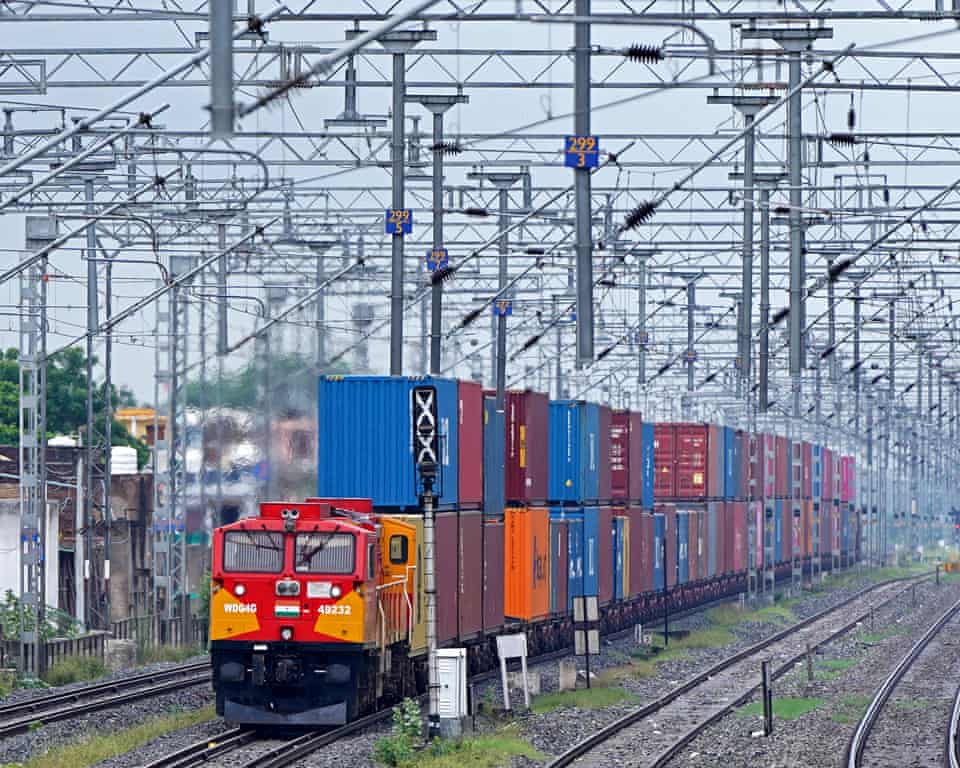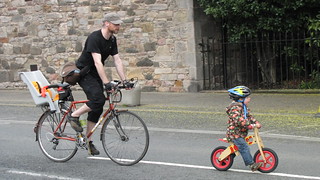Partly (largely?) due to road haulage lobby.
And Transport Minister with family interest in motorway building.
CityCyclingEdinburgh was launched on the 27th of October 2009 as "an experiment".
IT’S TRUE!
CCE is 16years old!
Well done to ALL posters
It soon became useful and entertaining. There are regular posters, people who add useful info occasionally and plenty more who drop by to watch. That's fine. If you want to add news/comments it's easy to register and become a member.
RULES No personal insults. No swearing.

Partly (largely?) due to road haulage lobby.
And Transport Minister with family interest in motorway building.
ChatGPT thinks so too:
The Woodhead railway route, which connected Manchester and Sheffield across the Pennines via the Woodhead Tunnel, was a major trans-Pennine line. Its passenger services were withdrawn in 1970, but its decline and effective closure began in the 1960s, influenced by a combination of economic, political, and strategic factors.Here’s a breakdown of why it was closed, who was involved, and what their aims were.
Why was the Woodhead route closed?
Changing freight patterns:
The Woodhead route was heavily used for coal transport from Yorkshire to Lancashire and the Midlands.By the 1960s, coal traffic was declining due to the shift toward oil and gas, reducing the route's primary source of freight income.
Passenger use was relatively low:
Despite being a fast and scenic route, passenger numbers were modest compared to more direct or populous routes.Competing lines, such as the Hope Valley Line, provided more local service and were better integrated with population centers.
Electrification anomaly:
The Woodhead route was electrified in 1954, making it one of the first mainline electrified routes in the UK.However, it used a 1.5 kV DC system, which quickly became outdated when British Rail standardised on 25 kV AC.
Upgrading the system would have been expensive, and the government and British Rail did not see sufficient return on investment.
Beeching Report influence (1963):
Although not directly listed for closure in Dr. Richard Beeching's report "The Reshaping of British Railways", the Woodhead route's closure aligned with the report’s emphasis on eliminating underused and unprofitable routes.Focus shifted toward consolidating freight and passenger services on fewer trans-Pennine routes.
Authority figures and lobbying groups involved:
1. British Railways Board (BRB)
The BRB, under Beeching's leadership, played a central role in rationalizing the rail network.They prioritized cost-efficiency, and the Woodhead route was seen as redundant in a network with multiple east-west lines.
2. Government / Ministry of Transport
The government of the day supported rail cuts to reduce subsidies.They favored road investment, particularly in motorways, as part of a modern transport strategy.
The closure of the Woodhead route was consistent with central government policy favoring roads over rail.
3. Road lobby / road haulage interests
Influential groups like the Road Haulage Association and other motorway development advocates supported the shift from rail to road.The rise of motorway construction in the 1960s, especially the M62 (another trans-Pennine route), undermined the case for maintaining the Woodhead railway.
4. Regional/local opposition
Some local councils and rail advocacy groups did object to the closure, citing future strategic value.However, these efforts were unsuccessful, largely due to the lack of national political support and the dominance of the prevailing transport ideology.
“
His period as Minister of Transport was controversial. He both oversaw significant road construction (he opened the first section of the M1 motorway) and the closure of a considerable portion of the national railway network with the Beeching cuts. His involvement in the road construction business Marples Ridgway, of which he had been managing director, led to concerns regarding conflict of interest. In later life, Marples was elevated to the peerage before fleeing to Monaco at very short notice to avoid prosecution for tax fraud.
“
In the unlikely event that someone ever creates a wikipedia page on me, I promise it won't have subsections titled "Peerage", "Conflict of interest", "Use of prostitutes" and "Flight to Monaco".
Now that you've committed that to web, we can indeed have those sections on the wikipedia page, referencing your insistence here that they won't exist :)
“
Train operator Lumo has been granted permission to extend its services further into Scotland.
The company is one of three East Coast Main Line train operators that have been given the green light to run additional services from December.
“
Currently
(for tomorrow)
“
Due to these adverse weather conditions, blanket 50mph speed restrictions will be implemented by Network Rail across all our routes. This will result in disruption to ScotRail services throughout the day.
Further to this, no services leave after 12.00 on Monday, 4 August on the following routes:
All routes north of Perth, including the Kyle, Wick & Highland Mainline
Routes north of Dundee, including services via Aberdeen
West Highland Routes, including Oban, Fort William, and Mallaig
Latest
“
no services leave after 12.00 on Monday, 4 August on the following routes:
Edinburgh - Fife/Perth/Dundee.
Perth - Dundee/Aberdeen/Inverness.
Dunblane - Perth.
Inverness - Aberdeen/Wick/Thurso/Kyle of Lochalsh.
West Highland Line (Helensburgh Upper - Oban, Fort William and Mallaig).

“
an exquisite art deco “Beavertail” observation car
“
“
A battery-powered train has broken the world record for the longest railway journey on a single charge.
The Great Western Railway (GWR) train, a specially adapted former District Line train, travelled overnight along a 200-mile (322km) route from Reading and back again via London Paddington and Oxford.
“
https://www.bbc.co.uk/news/articles/c2l7ry7zp5po
As some people have observed, electrification towards the Forth Bridge is proceeding - slowly.
Info on ‘the plan’ has disappeared from SR website. The general idea is/was to electrify to Leven and Markinch, so battery trains could easily get to Perth and Dundee (and back).
Apparently there is currently a tender out for the new rolling stock - presumably this is a public document(?)

From SR HST video
Half the problem of getting multiple bikes on to trains is not the handlebars, but the stupid yellow rack that they expect you put through the frame... A rack that only fits 1980s-style men's road racers without any luggage.
Just get rid of that rack and have a simple extendable car seat belt system, and things will be much easier
“Just get rid of that rack“
They aren’t suitable for most bikes
But
They clearly say ‘bike space’ and (most) people move if someone gets on with a bike.
I had the guard dig out a carriage worth of luggage once to get my bike in that reserved space, I thoughtlessly got on at HYM instead of EDB, not sure how much stuff got there so quickly! By the time I got to Pitlochry the bike had a shrine of luggage around it and the guard had to come back to help me clear it to get off at Blair Athol.
Yeah people shouldn’t be allowed ‘luggage’ or buggies…
Think SR must have weeded out most of the unhelpful staff (hard to imagine they’ve all been successfully retrained!)
I really think there has been a great improvement in staff attitude/helpfulness in last year or so.
Not an easy job - running a railway that’s a bit antiquated, and having to deal with ‘the public’!
I also think there’s more understanding of ‘it’s the not the frontline staff’s fault.
(But that might just be overestimating the ‘customers’…)
Imagine if there was a dedicated space for bikes, with flat accessible access, and fenced off with a metal cage and gate. With an extra-wide door to the platform for access. It could even look visibly different to the other carriages and always be at one end of the train. One could call it a "guard's van"
Yeah people shouldn’t be allowed ‘luggage’ or buggies…
Its fairly long trip so was able to relax once I had the guards assurances they'd help me dig it out, like you say the staff are much better than they used to be.
Coming back my very mucky bike got a bit more space, I even tried to hose some of the crud off but I only had a tap and a water bottle so had limited success.
@chdot
I recall the concern from the boss of GNER at an event in Edinburgh, when news came of a fatality on ECML between Hitchin and Peterborough
Even in those days with higher staffing levels the BT Police were thinly spread, and the assurance that the railway 'crime site' would be safely set up to manage the very real risk from moving trains with untrained civil Police, and other emergency services at loose on a 'live' railway line
BTP have the additional awareness of the systems to isolate hazards, & provide relevant actions quickly. There is an informal 'guarantee' that the evidence will be secured, lines cleared and a train service restored in 90 minutes for the typical serious incident, but only if BTP arrives first & sets up the operation
The strategically located Police offices also provide points where a train can run directly to stop where Police can board at the required carriage to deal with the problem
@neddie @steveo @chdot sadly long moribund (partly because it was poorly structured & too closely 'managed' by Scotrail at this time - we did have a Scotrail Cycling Forum
It didn't last as long as the brilliant (also Abellio) Northern Rail Cycling Forum, a detail I can explain in depth separately, but we have had some successes from engagement with Scotrail and Transport Scotland
Because Scotrail doesn't pay to have seat reservations on most of the local services it doesn't have the bodge from 1977 to create an imaginary Coach X with seats that are bike spaces to reserve by breaking the system rules and creating 2 seat reservations for 1 travel ticket (for the sleeper to Fort William this meant having 2 seat reservations and 2 bike reservations for 2 travel ticket, & only Scotrail's call centre staff (in Fort William/Plymouth or Inverness) were proficient in working this
For those who use the Real Time Trains independent website you'll notice that it combines the core open rail data showing all the train services as they are running with a banner showing exactly which carriages are on the train. It could further include a data feed to associate the cycle and wheelchair spaces on a data file for those train consist headers that links to the website feed, so in theory a real time data feed can show the bike & wheelchair spaces on every train in the system and whether they are reserved, occupied or empty. But unless we get an independent program developer with a lot of time to play around with data or a huge amount of money that the main bodies will allocate to this it will remain a dream. For buses and coaches especially Ember (100% express coaches running 24hr on a steadily growing network covering Scottish main trunk road routes with the best deal on total mobility which I should be describing if I can get resources to support this - so contact me directly - you can see the bike spaces (2 officially per 40-60 seat coach vs 2 per 140-seat train) book them 10 min before travelling, & book for the coach driver to actually pull off the motorway to pick you up on request at places like Cumbernauld, Aucheterader, St Madoes, ...)
Through work I did with SW Trains in 2002 a general best practice detail was established for most local trains, with cycles 'placed' on their tyres, and a space at least 1.4-1.5m long taking out a pair of fixed rigid seats & fitting 2 tip up seats on the wall, cutting back the draught screen by the doors, and using the added 4-6" of space for a front tyre behind the sloping seat backs. This gives space for 2 regular bikes(3-4 at a pinch) on 318 & 320 trains (3 coaches)
Work with Scotrail on Class 380 and then Class 385 saw a 'standard 2.4 metres with cut back draught screens and 5 tip up seats (Officially up to 4 bikes - but at least 6 can be herringbone stacked, plus tandems/trikes (even for Karen Darke/Ken Talbot will fit
The Class 334 'Junipers' were refurbished & got a similar space in the centre carriage
Only the Class 158 diesel units kept the altered 2-bike space with the hideous & stupid Calyx unit but I've stacked up to 8 bikes in this space, and Scotrail has some units with seats removed to create generous space (nominally for wheelchairs in one of the 2 carriages, and the big luggage rack takes a bike with wheels out
The Class 170 the general workhorse has on most Scotrail units a bike space at one end (officially 2 bikes but with good packing at least 4) plus the original (with crap (& expensive (£2000+ per unit) Calyx units by the accessible toilet at the other end on 3 car units. These are often reserveable on many routes
The Class 156 were the very reliable units on E Kilbride, Dumfries, West Highland line that are steadily being displace by the 100mph electric fleets, with debate on whether Scotrail could pick up the 100/110mph electric units being mothballed when new trains arrive for Midlands and other areas, plus the hybrid new trains that Scotrail is drafting the spec for with Louise S a retained engineer for this project (contact me direct & keep pressing Transport Scotland via your MSP to get a place round the table on the specifications)
Finally the HST's - originally (without actually engaging cyclists, especially where I've been designing stowage that works on trains since 1990! They fitted the totally crap units used on Class 220/221 with no competent application of the most basic dimensions for bikes or the Health & Safety Regulations for manual handling (1992) where lifting a bike (over 12 Kg) violates the legally recognised maximum limits for safe work (a handy detail for 2-tier racks, & loading bikes on trains for a separate detail - contact me directly on this)
The crap design of HST saw Lee Craigie thrown off a train at Perth because her bike handlebars (which didn't fit the bike space) hooking the emergency door release handle and making a full emergency brake application on the train. The same designs were used on the Class 220/21 Voyager trains that are now on Cross Country trains with a 63 cm gap (bike handlebars typically up to 75/80 cm!) to fit bikes into the bike stowage space. Work with Scotrail on HST's saw 3 sets of fixed seats removed, & 6 tip up seats fitted in Coach C for officially 4 bikes but at least 6 will fit easily
My standard cycle envelope was published in my 1997 report on cycle parking (28 YEARS ago!) and based around the Dutch Fietsparkeur. My work on trains has often referenced the Orion Gamma units that have been used on buses, trams & trains across Europe since 1988, used singly, or mounted on a frame that can be fixed to the vehicle, or a building. The 2005 project for the residential bike storage project in Edinburgh use them to park 6 bikes at the foot of a tenement staircase in Newington
The Scotrail Class 153 units use a system that uses same design principles to locate, hold upright and secure almost any type of cycle (regular, longtail, tandem, trike, recumbent & bakfiets) and loads/secures in under 10 seconds per bike, especially if the crap straps are replaced by a spring loaded retaining bar (This unit can be used on trains, trams & buses, and takes up minimal space when not in use. If only people actually engaged me to get this fitted to more trains!)
Do pester LNER too as they're specifying some new CAF trains right now, & so far I'm seeing the lift & hang up ideas, which will still breach Health & Safety regulations for lifting bikes
Edited version! (TLDR proof?)
@neddie @steveo @chdot sadly long moribund (partly because it was poorly structured & too closely 'managed' by Scotrail at this time - we did have a Scotrail Cycling Forum
It didn't last as long as the brilliant (also Abellio) Northern Rail Cycling Forum, a detail I can explain in depth separately, but we have had some successes from engagement with Scotrail and Transport Scotland
The highly hazardous suggestion that handlebars are loosened & turned on HST's is worrying (I'm happy to speak on this)
Originally (without actually engaging cyclists, they fitted the totally crap units used on Class 220/221 with no competent application of the most basic dimensions for bikes or the Health & Safety, & no competent system to stop bikes swinging around on the hooks (which also pulled out of the ceiling bolt fixings)
Health & Safety Regulations for manual handling (1992):lifting a bike (over 12 Kg) violates the legally recognised maximum limits for safe work (a handy detail for 2-tier racks, & loading bikes on trains)
The HST issue also saw Lee Craigie thrown off a train at Perth because her bike handlebars (which didn't fit the bike space) hooking the emergency door release handle and making a full emergency brake application on the train. For Cross Country trains with a 63 cm gap (bike handlebars typically up to 75/80 cm!) to fit bikes into the bike stowage space.
Remedial work with Scotrail on HST's saw 3 sets of fixed seats removed, & 6 tip up seats fitted in Coach C for officially 4 bikes but at least 6 will fit easily
My standard cycle envelope was published in my 1997 report on cycle parking (28 YEARS ago!) and based around the Dutch Fietsparkeur. My work on trains has often referenced the Orion Gamma units that have been used on buses, trams & trains across Europe since 1988, used singly, or mounted on a frame that can be fixed to the vehicle, or a building. The 2005 project for the residential bike storage project in Edinburgh use them to park 6 bikes at the foot of a tenement staircase in Newington
The Scotrail Class 153 units use a system that uses same design principles to locate, hold upright and secure almost any type of cycle (regular, longtail, tandem, trike, recumbent & bakfiets) and loads/secures in under 10 seconds per bike,
https://www.flickr.com/photos/h52/50357538903/
https://www.flickr.com/photos/h52/50358403197/
Replacing the (crap) straps by a spring loaded retaining bar neatens up this system (The Gamma unit has been used on trains, trams & buses, and takes up minimal space when not in use. If only people actually engaged with those who actually know about cycle stowage to get this fitted to more trains!)
Do pester LNER too as they're specifying some new CAF trains right now, & so far I'm seeing the lift & hang up ideas, which will still breach Health & Safety regulations for lifting bikes
@ Tulyar
Thanks for all that
Interesting
Never clear if the ‘right people’ know/understand any of that - or stay in jobs long enough to make sure that enough of the ‘best practice’ happens!
Of course there’s a long history to ‘bikes on trains’.
In the olden days many trains had guard”s vans - for luggage, parcels etc.
But you had to pay for bikes.
Removal of the charge was a, successful, Spokes campaign -
“
1998 ScotRail Delight! - Our 4- year campaign succeeds! ScotRail scraps the £3 bike fee, wins the Scottish Office Cycle Challenge, and puts £2m into bike spaces.
“
http://www.spokes.org.uk/wp-content/uploads/2017/02/0711poster_30years.pdf
Since then ‘bikes on trains’ has largely been accepted as ‘necessary’ with various levels of enthusiasm for encouraging it and providing ‘suitable’ space.
I don’t envy anyone involved in the design processes of planning suitable space for seats which need to be reasonably comfortable, and suitable for people who, on average are wider and taller than in the past - and all the other things passengers expect to be able to travel with!
Wheelchairs, child carriers and bikes are getting bigger too.
(Buggies no longer seem to fold…)
I really do get the impression that ScotRail staff are more likely to be helpful than they often were in the past.
Clearly there is pressure to get as many seats as possible on every train, but unless train companies intend to implement a “no seat, no travel’ policy, larger flexible space areas would seem to be sensible.
In the olden days many trains had guard”s vans - for luggage, parcels etc.But you had to pay for bikes.
Half fare for the bike up until 1977 but free bike carriage after that, according to the record of this parliamentary debate in Hansard. Again, from that debate, BR banned bikes from Southern Region commuter trains in 1980. I don't know how the policy mutated after that.
I think it was in the summer of 1977 that I took my bike in the guard's van from (IIRC) Stratford-upon-Avon to Derby. I don't recall paying the half price fare for it so it's possible that I caught the early days of the free bike carriage era.
I definitely took my bike on a train north from Hastings or somewhere in that vicinity sometime around 1982-1983. I can remember having a chat with the guard as I travelled in the van with my bike. I assume that it wasn't a "commuter train" (however that was defined at the time*) otherwise the bike would presumably have fallen foul of the ban instituted in 1980. I'm pretty sure that the bike went free on that occasion, too (although I suppose it's possible that the guard took pity on me and let me take my bike sans ticket so long as I rode in the van with it. TBH I can't quite remember the journey at that level of detail).
* I remember that it was a fairly normal SR third rail EMU. Maybe it was defined by the time of day and/or the direction of travel, a bit like off-peak fares.
The Rolling stock leasing companies have some serious bean counting figures on how much every m² of the inside of a carriage has to earn per day
The 1980's saw sectorisation as a prelude to privatisation, where each operator also closely reviewed the earnings of every m² of a carriage, and the Royal Mail/Parcels sectors were not paying for the empty van spaces running around on some trains or filled with standing passengers when the seats were filled on peak commuter services - so they started running 2 trains instead of 1 because the sectors couldn't have a pragmatic & sensible way of using trains plus by cutting out the van space on a 3-coach 64 ft (20 mtr) carriage train it could be replaced by a 2 coach 75 ft (23 mtr) train & now we have 26 mtr carriages to ram in more (fixed) seats which somehow in this madcap economics finds it acceptable for trains with fixed seats to run with empty space rather than have the flexibility to take parcels & bikes on services off-peak/contra flow or overnight... as we used to do
PM as I can explain in more detail
“
ScotRail to replace controversial AI voice on trains
“
Just posting for the photo!

https://www.theguardian.com/us-news/2025/aug/27/trump-50-percent-tariff-india-explainer
You must log in to post.

 Cycling in Edinburgh Flickr group
Cycling in Edinburgh Flickr group
Video embedded using Easy Video Embed plugin